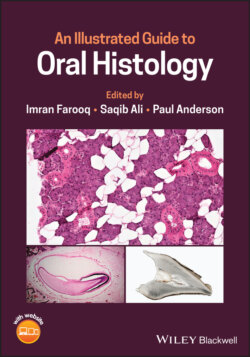Читать книгу An Illustrated Guide to Oral Histology - Группа авторов - Страница 20
1.2.1 Description
ОглавлениеThe cap stage is the second stage of tooth development. As the tooth bud matures, it takes part of dental lamina along with it, which is called the lateral lamina. The tooth bud grows non‐uniformly, and the growth is more in certain areas and less in others. This stage is called the cap stage as the epithelial outgrowth looks like a cap which is sitting on top of the condensed ectomesenchyme (dental papilla). During this stage, greater differentiation is seen in the central and peripheral cells. The central polygonal cells change into the stellate reticulum cells which have a somewhat star‐shaped appearance due to greater intake of water, pushing the cells apart but retaining their desmosomal attachments. The peripheral cells change into external and inner enamel epithelium. The outer enamel epithelium cells are cuboidal whereas the inner epithelial cells are tall and columnar. These layers of epithelial cells are separated from the dental follicle and dental papilla by a basement membrane. Another structure called the enamel knot is formed during this stage which represents a collection of cells in the center of the inner enamel epithelium. It is a transitory structure which is believed to contribute cells to the enamel cord (strand of cells).
